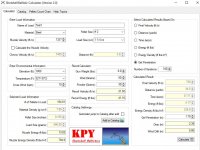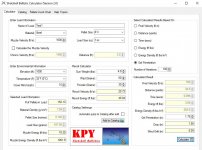A5 Sweet 16
Well-known member
Many of you have read this from me before. Some haven't.
With bismuth, go 1 shot size larger than you'd use with lead. With steel, go 3 sizes bigger than lead. For pheasants, shoot a large enough payload through a gun/choke combo that will give you at LEAST 90-100 pellets evenly distributed throughout a 30" circle at whatever range you consider a "longish" shot (for me, that's 40-45 yds). Muzzle velocity between 1250 & 1350 fps is fine. Faster loads don't gain you any meaningful effective range. They just make it less likely to pattern well. The fast bismuth loads & hyperfast steel loads are nothing more than gimmicks used to trick you into believing you have extended range loads. You don't. Give up on straight-away pheasants further than 35 yds, especially over heavy cover. They're almost impossible to drop & recover unless you're hitting them with a very tight pattern of pretty big shot. That's 4 or 3 bismuth or 2 or 1 steel. Practice shooting. Hunt a lot & learn to relax, get your feet set, really see the bird's head & flight path, mount your gun as perfectly as possible, get a quick lead, pull the trigger, & follow through.
With bismuth, go 1 shot size larger than you'd use with lead. With steel, go 3 sizes bigger than lead. For pheasants, shoot a large enough payload through a gun/choke combo that will give you at LEAST 90-100 pellets evenly distributed throughout a 30" circle at whatever range you consider a "longish" shot (for me, that's 40-45 yds). Muzzle velocity between 1250 & 1350 fps is fine. Faster loads don't gain you any meaningful effective range. They just make it less likely to pattern well. The fast bismuth loads & hyperfast steel loads are nothing more than gimmicks used to trick you into believing you have extended range loads. You don't. Give up on straight-away pheasants further than 35 yds, especially over heavy cover. They're almost impossible to drop & recover unless you're hitting them with a very tight pattern of pretty big shot. That's 4 or 3 bismuth or 2 or 1 steel. Practice shooting. Hunt a lot & learn to relax, get your feet set, really see the bird's head & flight path, mount your gun as perfectly as possible, get a quick lead, pull the trigger, & follow through.


